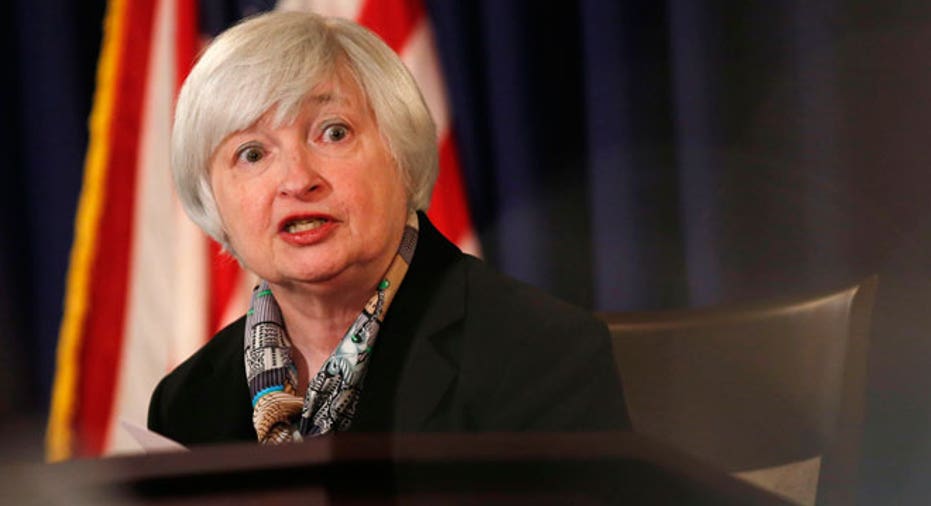Yellen Sees Jobless Rate Normalizing in Two Years

Federal Reserve Chair Janet Yellen on Wednesday said she and her central bank colleagues believe the U.S. economy will reach maximum employment and achieve price stability -- referred to as the Fed’s dual mandate -- by the end of 2016.
Under that scenario, the unemployment rate would range from 5.2% to 5.6% and inflation would be in a range of 1.7% to 2%, on an annual basis.
“If this forecast was to become reality, the economy would be approaching what my colleagues and I view as maximum employment and price stability for the first time in nearly a decade. I find this baseline outlook quite plausible,” Yellen said in a speech at the Economic Club of New York.
Elsewhere in the speech, the newly-minted head of the mighty central bank gave no indication that interest rates would be raised at any point prior to when the economy achieves that dual mandate.
Instead, she reiterated the Fed’s position that interest rates will remain at their current historically low levels and that “accommodative” policies will remain in place until the economy shows sustained momentum.
“The larger the shortfall of employment or inflation from their respective objectives, and the slower the projected progress toward those objectives, the longer the current target range for the federal funds rate is likely to be maintained,” Yellen said.
She also reiterated the Fed’s position that policy makers will use an array of economic indicators to determine when interest rates may start moving higher.
At the very least, the key fed funds rate (the rate at which banks charge each other on short-term loans) will remain at its current level “for a considerable time” after the Fed winds down quantitative easing, or the monthly bond purchases now being tapered by $10 billion each month.
“Of course, if the economy obediently followed our forecasts, the job of central bankers would be a lot easier and their speeches would be a lot shorter. Alas, the economy is often not so compliant,” Yellen said before launching into a host of reasons the Fed’s current forecasts might not pan out.
While the unemployment rate has fallen significantly in recent months to its current 6.7% level, there is still “market slack,” according to Yellen.
Citing as examples, Yellen said the share of the workforce that is working part time but would prefer to work full time remains “quite high by historical standards.” Similarly, while the percentage of the long-term unemployed, or those out of work for longer than six months, has fallen from its peak in 2010, it remains as high as any time prior to the Great Recession.
Another concern is whether inflation is steadily moving upward toward the Fed’s 2% target rate. Inflation has emerged as a key indicator for the Fed in its effort to determine when interest rates may start moving higher.
Inflation at its current level of 1% is a cause of concern because it suggests a fragile overall economy due to a weak labor market and stagnant wages.
Yellen also defended the Fed's forward guidance, stressing the positive impacts of clearly setting market expectations.